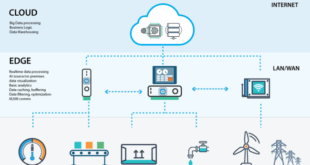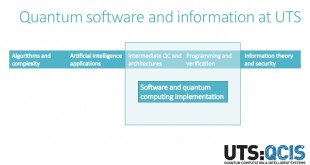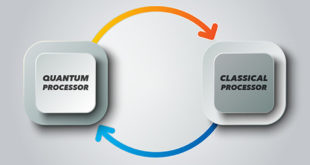In today’s digital age, social media platforms have become powerful tools for communication, information sharing, and social interaction. However, they have also become breeding grounds for extremist ideologies and terrorist propaganda. To counter this alarming trend, the integration of Artificial Intelligence (AI) and data analytics is emerging as a promising …
Read More »Edge Computing: The Key to Amplifying IoT Infrastructure and Empowering Military Missions
Introduction In today’s interconnected world, the Internet of Things (IoT) has become an integral part of our daily lives, transforming industries and revolutionizing how we interact with technology. As the number of connected devices continues to grow, so does the need for efficient and powerful infrastructure to support their operations. …
Read More »Nanosensors enable Nanodevices and NEMS to Nanorobotics
Introduction In the vast world of nanotechnology, where science meets innovation, nanosensors have emerged as a groundbreaking technology. These miniature devices possess the remarkable ability to detect and manipulate the tiniest particles and phenomena at the nanoscale. When combined with nanodevices and NEMS (Nanoelectromechanical Systems), nanosensors unlock new possibilities in …
Read More »Soft Robotics Unleashed: Exploring the Future of Flexible Machines in Everyday Life
Introduction The world of robotics is undergoing a significant transformation, thanks to the emergence of soft robotics. This cutting-edge field focuses on developing robots with flexible and deformable bodies, bringing a new level of adaptability and integration into our daily lives. With materials like elastomers, gels, and textiles, engineers and …
Read More »Navigating the AI Revolution: Exploring the Booming Industry and Market Growth
Introduction: Artificial Intelligence (AI) has transformed from a distant vision of the future to an integral part of our present reality. From self-driving cars to voice assistants, AI is revolutionizing industries across the globe. The AI industry and market have witnessed explosive growth in recent years, captivating the imagination of …
Read More »Predicting Military HF Radio Communications with Distributed Sensors: DARPA’s Canun Mission Planning Tool
Whether in the field of battle, search-and-rescue or humanitarian aid efforts, the ability to share real-time, networked information between ground, sea and airborne forces is rapidly becoming the defining factor in a mission’s success. However modern satellite and other communications systems in higher frequecies are under constant threat from adversaries …
Read More »Quantum programming languages, software tools and Quantum frameworks plays a critical role in exploiting the full potential of quantum computing systems in AI, machine learning, big data science, and optimisation
Global Quantum computing race is heating up among nations as well as between different organizations. In a major development, the University of Science and Technology of China (USTC) in June 2021 demonstrated what researchers claim is the world’s fastest quantum computing processor, surpassing the previous and unofficial record held by …
Read More »DARPA QuICC developing hybrid Quantum computer to solve optimization problems for Defense applications
Department of Defense (DOD) must solve many complex optimization problems to enable mission capabilities – from determining the most efficient way to distribute supplies to minimizing warfighters’ exposure to hostile forces. Solving these intricate scenarios is difficult, largely owing to the limitations of existing computing resources. Today, many optimization problems …
Read More »Defense Acquisition moving towards “as-a-service” model
The rising cost of new weapons systems has long been a concern for the Department of Defense (DoD). And, as DoD seeks to transform itself for the 21st century, it can anticipate an extended period of downward budgetary pressure. Moreover, growing costs will require difficult choices for DoD just to …
Read More »Defense metaverse for military superiority
Metaverse is a vision of a highly immersive and interactive shared world inhabited by avatars of real people that will enable billions of people to work, play, collaborate and socialize in entirely new ways. As a concept, the Metaverse is a persistent, online, 3D universe that combines multiple virtual spaces. …
Read More » International Defense Security & Technology Your trusted Source for News, Research and Analysis
International Defense Security & Technology Your trusted Source for News, Research and Analysis




